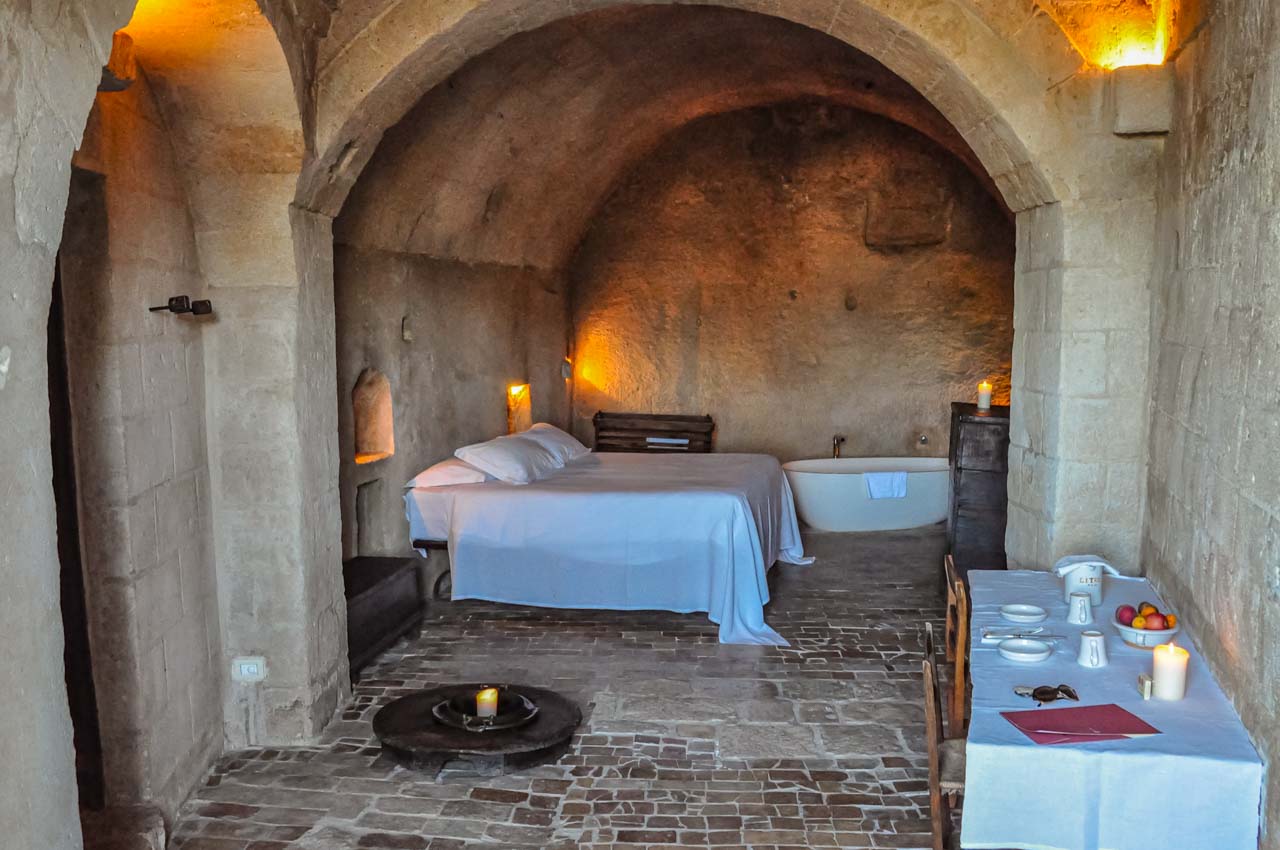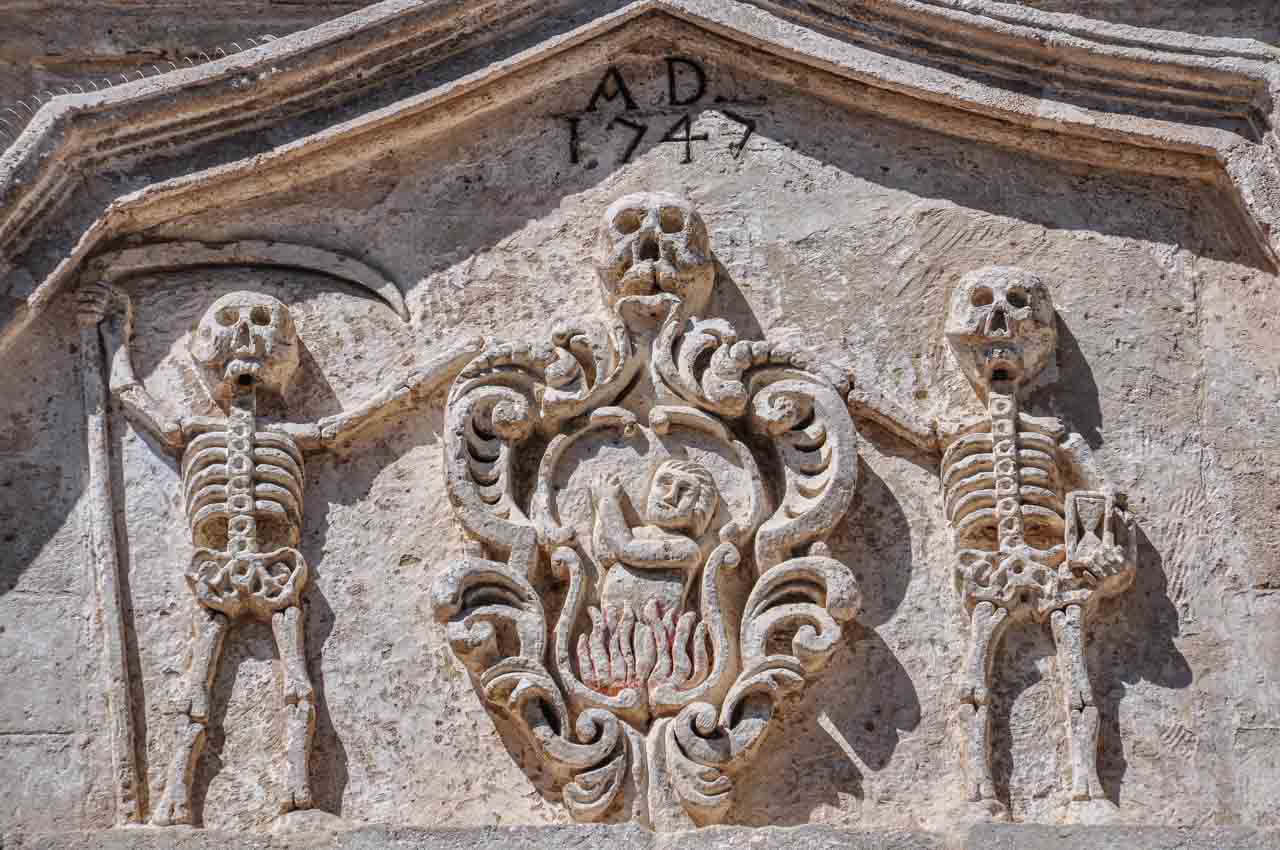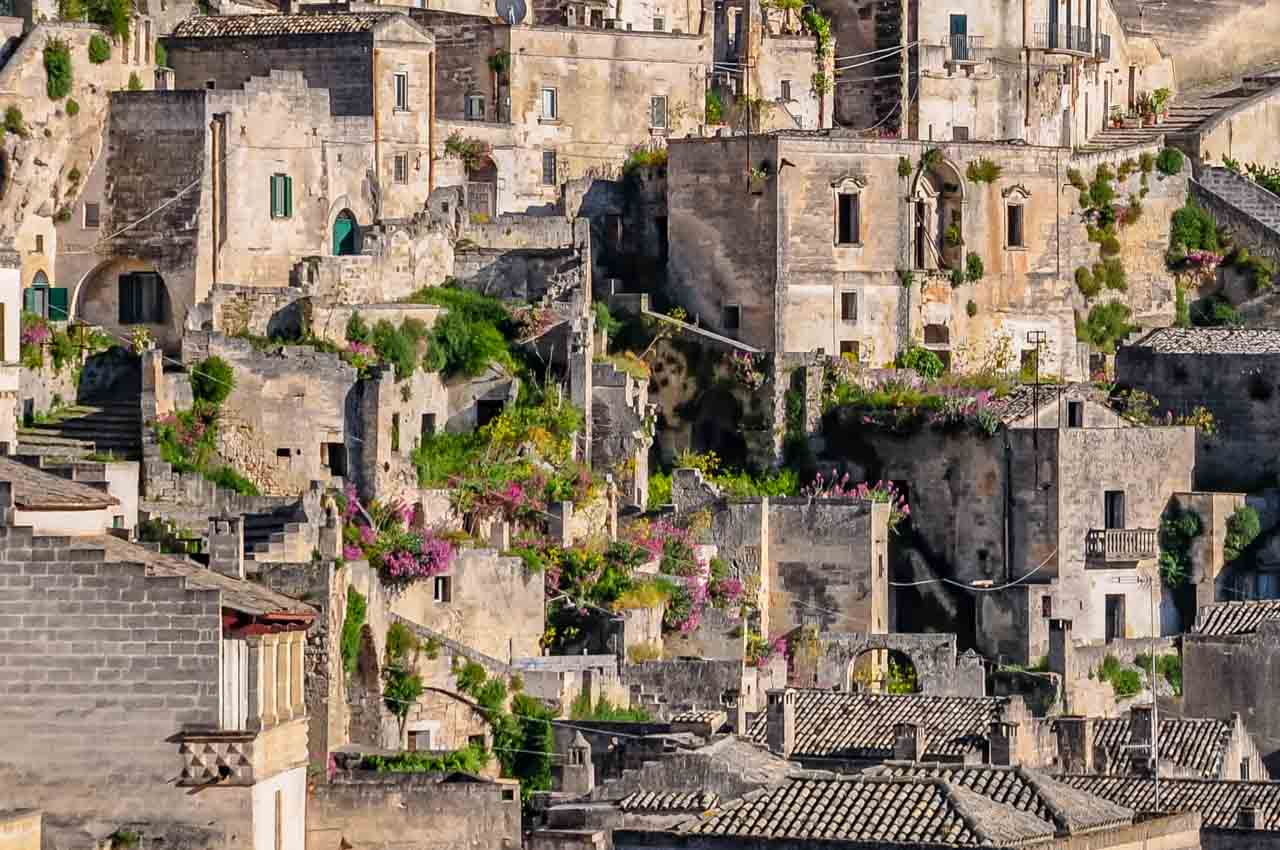Sassi di Matera: The Stone City of Italy and a UNESCO World Heritage Site Steeped in History and Charm.
Welcome to the mesmerising world of Sassi di Matera, a unique and ancient destination. Matera, a city in Italy’s southern region of Basilicata, is renowned for its extraordinary cave dwellings and rock-cut architecture, collectively known as the Sassi. These ancient settlements, carved into limestone cliffs, have earned the Sassi di Matera a place on UNESCO’s World Heritage List and have captivated visitors with their rich history, unique charm, and breathtaking landscapes.
In this travel blog post, I’ll take you on a visual journey through 15 stunning photos that capture the essence and allure of the Sassi di Matera. Each image tells a story, inviting you into a world where cave dwellings, narrow winding streets and alleyways, and rock-cut architecture create an otherworldly landscape.
Whether you’re a history buff, a culture enthusiast, or simply seeking a destination off the beaten path, Sassi di Matera offers an unforgettable experience. Let these photos inspire you to pack your bags and immerse yourself in the wonders of this timeless Italian gem.
Situated in the “instep” of Italy’s “boot”, Sassi di Matera (literal translation from Italian, “Stones of Matera”) were declared a World Heritage Site by UNESCO in 1993, while Matera was awarded the 2019 European Capital of Culture. However, Matera, particularly the Sassi, did not always deserve these honours. Not so many decades ago, Matera’s Sassi was a place of national humiliation dubbed the “Shame of Italy”.
The Sassi di Matera has two districts – Sasso Caveoso and Sasso Barisano. They are ancient! – prehistoric troglodyte settlements where people have lived in cave dwellings since 7000 BC.
The Sassi have a colourful history that has seen them go from the earliest inhabited city in Italy to a place of national humiliation to Italy’s pride. This history, which is still visible today, makes Sassi di Matera a matchless tourist destination.
A brief history – from shame to honour
In his book Christ Stopped at Eboli (published in 1945), Carlo Levi put Sassi di Matera on the world map when he highlighted the poor living conditions. He painted a picture of abject poverty. Malaria, cholera and typhoid were rampant in the Sassi. Families and their animals were living together under the same roof in dwellings with no natural light or ventilation, no electricity, water or sewers, and there was a high rate of infant mortality.
The Sassi became an embarrassment to the Italian Government. So much so that in 1950, the Prime Minister declared a state of emergency and put plans in place to move the Sassi’s inhabitants out. By 1952, the Sassi were empty – abandoned through forced removal.
After sitting dormant for a few decades, the Sassi began to transform, starting in the 1970s with artists and hippies rediscovering Matera’s Sassi. This urban renewal and a younger generation expressing their desire to bring the caves back to life led the Italian Government to pass a law in 1986 to repopulate the Sassi, connecting water and electricity and subsidising restoration work to encourage the Sassi’s revival.
And the people did come – restoring caves as homes, hotels, restaurants and bars. But many are still uninhabitable.
Sassi di Matera’s revival was further cemented in 1993 when UNESCO listed it as a World Heritage Site for being “the most outstanding, intact example of a troglodyte settlement in the Mediterranean region” and being named 2019 European Capital of Culture.
Matera has reclaimed its dignity and credibility in the eyes of Italy and the world.
Discover Sassi di Matera
I travelled to Matera on a 17-day small group tour with Albatross Tours on their Italy, the Deep South & Sicily tour, staying two nights in the Sassi.
The Sassi are carved into the limestone cliffs of a deep ravine gouged out by the Gravina River. First viewed from across the ravine, the Sassi di Matera were like nothing I had seen before. I have visited Troglodyte caves in France and spent time in Cappadocia in Turkey. But the Sassi di Matera, with caves stacked on each other while clinging to the steep slope, was a stand-alone matchless sight. Then, creating a unique juxtaposition, the modern city of Matera overlooks the Sassi from its height at the top of the hill.
My first ‘taste’ of Sassi di Matera and what it must be like to live in the Sassi was my accommodation for two nights in the luxury Le Grotte della Civita – a cave hotel on the edge of the ravine in the most ancient Sassi area.
Le Grotte della Civita consists of 18 large ‘rooms’ with ensuites. All the rooms are individual caves that have been beautifully restored whilst retaining their original features. The furnishings were simple but tasteful, with much of the lighting provided by candles. The breakfast was served in a reclaimed cave that was once a church and was typical of southern Italy – consisting of various breads, cakes, pastries, meats, jams and cheeses. My stay at Le Grotte della Civita was truly memorable.
After a very comfortable night’s sleep and a delicious breakfast, I joined the walking tour in the morning with a local guide. Walking tours are a great way to get acquainted with a city and learn its history. The walking tour of Sassi di Matera was a fascinating history lesson while being introduced to significant sites. The tour included visiting a cave dwelling to see how families lived in their stone houses and viewing one of the ancient Rupestrian Churches with its biblical frescoes on the cave walls dating back to the Middle Ages.
By the end of the tour, I felt prepared to spend the afternoon and evening on my own, exploring and discovering the labyrinth that is Sassi di Matera. I was in my element, walking around the narrow streets and alleyways, talking to the locals, checking out their cafes, and having all the time I wanted to take photos. A word of advice: you will need comfortable shoes to walk around the Sassi as there are many steep steps to negotiate, given the Sassi are built on the side of a ravine.
Matera has 180 churches, 40 of which are in the Sassi, including the Cathedral and the rock-cut Church of Santa Maria di Idris.
My favourite church was the Church of Purgatory, constructed as a place for people to pray for the souls trapped in limbo between heaven and hell. Completed in 1747, its recurring and only theme is that of death. The baroque façade of the church and its doors are covered with carvings of skulls, skeletons, crossbones, and other death-related decor. While a church focusing on death might seem a bit Grim Reaper-ish, it was fashionable at the time of construction, as death was not seen as the end but as the beginning of a new life.
Exploring the Sassi di Matera
While the Sassi may look like masses of houses, the house-like facades are only that, as the ‘houses’ are dug well into the rock, forming the cave dwellings Matera is famous for.
Houses in the Sassi are built on top of other houses, where many of the streets are built on the roofs of houses, and floors are ceilings of houses below.
You would be forgiven for thinking the Sassi are a place of shadow and crampedness. But not so. The squares in the Sassi are sun-drenched open spaces flanked by cafes, shops, churches, and restaurants – great for people-watching.
Historical and Cultural Timeline:
2019: Matera is the European Capital of Culture.
2014: Tourism starts to take off. This was most likely due to Matera being named the 2019 European Capital of Culture, and Matera began preparations for a year of events highlighting culture and the arts.
1993: UNESCO lists Sassi di Matera as a World Heritage Site.
1986: Italian law changes and people are encouraged to return to the Sassi.
1952: Abandonment of the Sassi through the Italian Government’s forced removal of its inhabitants.
Prehistory: (approximately 9,000 years ago) People first inhabited the Sassi.
Fun facts
Several Directors have used Sassi di Matera as a film location for their movies:
- Mel Gibson’s controversial movie, The Passion of the Christ, 2004;
- Pier Paolo Pasolini’s The Gospel According to St Matthew, 1964; and
- King David was directed by Bruce Beresford and starred Richard Gere in 1985.
It would seem Matera’s Sassi makes for a great ancient Jerusalem.
The 2021 James Bond movie No Time to Die also used Sassi di Matera as a film location.
Sassi di Matera is not just a destination; it’s an immersive journey through time, offering a unique blend of history, culture, and natural beauty that promises to leave a lasting impression on anyone fortunate enough to explore its enchanting streets.
The Sassi beckons, inviting you to witness a living backdrop as you explore a world where tradition meets innovation. The 15 photos you’ve seen here in my blog post are mere snapshots of the unforgettable travel experience that awaits you in person. Dare to wander off the beaten path!
Editor’s Note: I originally published this blog post in March 2019 and have updated it for accuracy and comprehensiveness.
Disclaimer: This post contains no affiliate links. All views and opinions are my own and non-sponsored. All photos are my own and remain the copyright of Just Me Travel.
© Just Me Travel 2018-2024.
Have I aroused your curiosity about Sassi di Matera? Are you inspired to visit Italy’s unique Stone City, a valuable UNESCO World Heritage Site? I love hearing from you. Join the conversation and leave a comment below.
Like this post? Save it for Later!
Author’s Note: Please check the latest travel restrictions before planning any trip and follow government advice.
You might also like
 A VENETIAN WALKABOUT – how to spend 5 perfect days in Venice, Italy [2020 UPDATED]
A VENETIAN WALKABOUT – how to spend 5 perfect days in Venice, Italy [2020 UPDATED]
My self-guided walking itinerary will lead you to incredible experiences as you explore 5 of Central Venice’s 6 districts and then go island hopping.


















